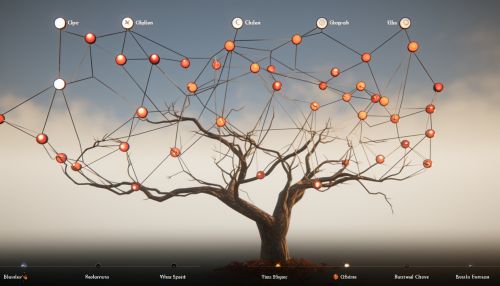Behavior Trees
Introduction
Behavior Trees (BTs) are a mathematical modeling tool used in artificial intelligence (AI) to describe the decision-making process of an agent, such as a robot or a video game character. Originating from the field of robotics, they have found widespread application in video game development and other areas where complex, dynamic decision-making is required.


Overview
BTs are a type of control structure that allows an agent to choose between different actions based on its current state and the state of the world around it. They are represented as a tree structure, with each node in the tree representing a possible action or decision point. The root of the tree represents the overall goal or behavior of the agent, while the leaves represent individual actions that the agent can take.
BTs are a form of Hierarchical Task Network (HTN), a method used in AI to break down complex tasks into simpler sub-tasks. However, unlike traditional HTN methods, BTs are dynamic and can adapt to changes in the environment or the agent's state.
Structure of Behavior Trees
A BT is composed of several types of nodes:
- Root Node: This is the topmost node of the tree, representing the overall behavior or goal of the agent.
- Control Nodes: These nodes determine the flow of decision-making in the tree. There are two main types of control nodes: Sequence Nodes and Selector Nodes.
* Sequence Nodes: These nodes execute their child nodes in order, from left to right. If a child node fails, the sequence node stops and fails as well. If all child nodes succeed, the sequence node succeeds.
* Selector Nodes: These nodes execute their child nodes in order, from left to right, until one of them succeeds. If a child node succeeds, the selector node stops and succeeds as well. If all child nodes fail, the selector node fails.
- Leaf Nodes: These are the terminal nodes of the tree, representing actions that the agent can take or conditions that it can check. There are two types of leaf nodes: Action Nodes and Condition Nodes.
* Action Nodes: These nodes perform an action and return a success or failure result.
* Condition Nodes: These nodes check a condition and return a success or failure result based on whether the condition is met.
Applications of Behavior Trees
BTs are used in a wide range of applications, including robotics, video game development, and other fields where complex decision-making is required.
- Robotics: In robotics, BTs are used to model the decision-making process of autonomous robots. They allow the robot to adapt its behavior based on its current state and the state of the environment, making it capable of handling complex tasks in a dynamic environment.
- Video Game Development: In video game development, BTs are used to control the behavior of non-player characters (NPCs). They allow the NPCs to respond dynamically to the player's actions and the state of the game world, making the game more immersive and engaging.
- Other Applications: BTs are also used in other fields, such as artificial life, machine learning, and cognitive science, to model complex decision-making processes.
Advantages and Disadvantages of Behavior Trees
Like any modeling tool, BTs have their strengths and weaknesses.
Advantages:
- Modularity: BTs are highly modular, making it easy to add, remove, or modify behaviors without affecting the rest of the tree.
- Reusability: The nodes in a BT can be reused in different parts of the tree, reducing the amount of code needed and making the tree easier to maintain.
- Predictability: BTs are deterministic, meaning that given the same inputs, they will always produce the same output. This makes them predictable and easy to debug.
Disadvantages:
- Complexity: BTs can become very complex as the number of behaviors increases, making them difficult to understand and maintain.
- Lack of Expressiveness: While BTs are powerful, they are not as expressive as some other AI techniques, such as genetic algorithms or neural networks. This means that they may not be suitable for all types of problems.
Conclusion
Behavior Trees are a powerful tool for modeling complex decision-making processes in artificial intelligence. While they have their limitations, their modularity, reusability, and predictability make them a popular choice in many fields, including robotics and video game development.
